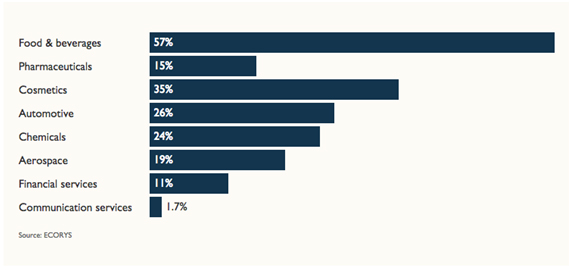The Times, 27th October 2016

Much of the discussion of the economic impact of leaving the EU has focused on tariffs.
If Britain were forced to fall back on the World Trade Organisation tariffs that provide the baseline rules for global trade, for example, then cars exported to Europe would have 10 per cent tariffs levied.
Yet tariffs are a piece of cake compared with other barriers to trade addressed by free trade blocs and free trade deals: non-tariff measures. The figures above are the additional costs for an American producer associated with meeting myriad EU regulations covering everything from the speed at which car bumper tests are conducted to food additives.
The bad news, as Doug Lippoldt, an HSBC trade economist has noted, is that the American situation is a good proxy for what British exporters would face in the absence of a free trade deal. The EU has been remarkably successful at wiping out barriers to trade within its frontiers, he argues, but the cost of doing business can be prohibitive if you’re on the outside.
The alternative to facing these huge costs for access to the single market is for Britain to lock into EU regulations and push Brussels to recognise “equivalence” where outright alignment is not possible. But to some Brexiteers that may not sound like taking back control.
